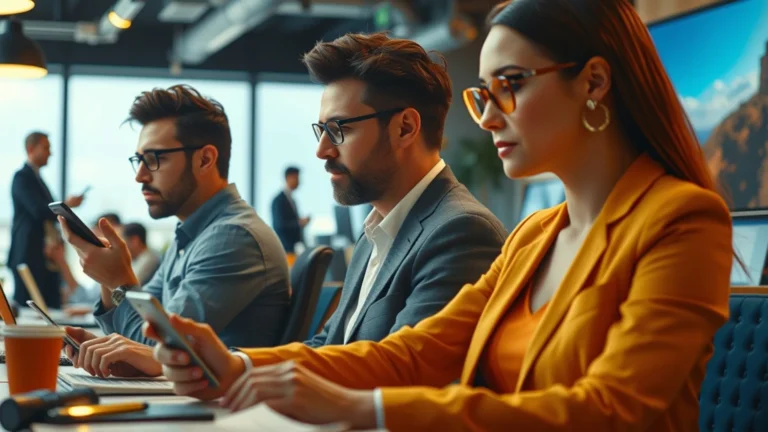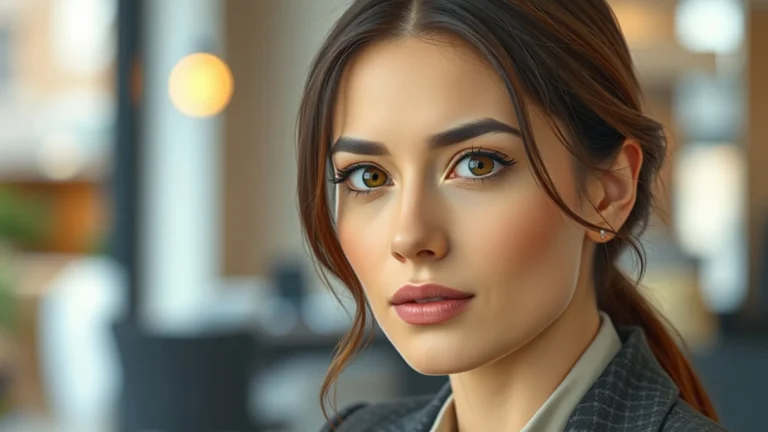What is business casual for women? Exploring the Trends for 2025
The concept of business casual attire for women has seen considerable transformation in recent years, and this evolution is set to continue into 2025.

Historically, “business casual” was closely associated with khakis and plain blouses; however, today’s interpretation blends professional aesthetics with comfort, showcasing personal style while projecting authority and professionalism. As the boundaries between conventional office wear and casual clothing continue to merge, it is crucial to grasp the elements that define business casual for women in 2025 in order to thrive in contemporary work settings.
Understanding Business Casual

Business casual is a dress code that finds a middle ground between formal business attire and the more relaxed nature of casual wear. The goal is to appear polished and professional without the need for a full suit. For women, this translates into stepping away from traditional business suits and opting for comfortable, stylish, and office-appropriate garments. Typically, business casual includes tailored trousers, blouses, dresses, skirts, and smart shoes, though interpretations may vary based on industry standards, corporate culture, and geographic location.
1. Key Elements of Business Casual for Women
To better understand the essentials of business casual attire, let’s explore the most common components:
Tops: Business casual tops are generally simple yet sophisticated. Suitable choices include blouses, button-up shirts, knit tops, and sweaters. The trend for 2025 favors minimalist designs in muted colors or subtle prints. Fabrics like silk, cotton, and wool will be favored, with turtlenecks making a comeback for added warmth during colder seasons.
Bottoms: For a polished business casual look, tailored pants, skirts, and dresses are fundamental. The 2025 trends highlight wide-leg trousers, straight-leg pants, and high-waisted options that combine comfort with professionalism. Pencil skirts and midi skirts offer a feminine touch, while well-fitted jeans or trousers made from cotton blends or wool are also acceptable if they maintain a neat appearance.
Dresses: Dresses remain a key component of business casual wardrobes. In 2025, knee-length or midi dresses featuring clean lines and flattering silhouettes are highly fashionable. Wrap dresses, A-line styles, and sheath dresses are excellent choices. Sleeveless and short-sleeved dresses can be paired with light blazers or cardigans for warmer days.
Outerwear: A blazer or cardigan can enhance any business casual outfit. Trending styles include relaxed-cut blazers that provide a polished yet casual vibe. Lightweight jackets and trench coats also serve as stylish layering options.
Footwear: Comfortable yet stylish footwear is essential in business casual attire. Popular choices include pointed-toe flats, loafers, and low-heeled pumps. Sneakers are gaining acceptance in business environments as long as they have sleek designs. Block-heeled ankle boots can add flair while keeping one warm and sophisticated in cooler weather.
2. Color and Pattern Trends
Color and Pattern Trends In 2025, the color palette for business casual is moving beyond traditional neutrals to embrace fresh shades and patterns.
Neutral Tones: Classic colors like black, navy, gray, and beige remain staples due to their versatility and professionalism. However, many women are now incorporating softer neutrals such as taupe, olive, and muted blue.
Pastels and Jewel Tones: Light pastel shades like blush pink, light blue, and lavender are becoming popular for spring and summer office wear, offering a youthful yet professional appearance. Jewel tones—emerald green, deep ruby red, and sapphire—are also gaining traction for their rich look.
Subtle Patterns: Patterns such as stripes, polka dots, and checks are increasingly favored in business casual attire. The key is moderation; small checks on blouses or trousers work well alongside simple geometric prints while avoiding loud patterns that could detract from a professional image.
3. Sustainability in Business Casual
With sustainability becoming a crucial element in fashion, women’s business casual wear in 2025 is increasingly characterized by eco-friendly choices. Brands are focusing on sustainable materials like organic cotton, recycled polyester, and bamboo—options that are not only better for the planet but also comfortable to wear. The trend towards second-hand shopping is also rising as women seek high-quality pre-owned pieces.
Vintage stores and online resale platforms offer an impressive selection of stylish business casual items at reasonable prices. Ethical fashion brands provide versatile pieces that transition seamlessly from work to leisure. By investing in timeless staples that can be mixed and matched, women can create a more sustainable wardrobe while reducing waste.
4. Cozy and Practical
As we move toward 2025, comfort continues to be a fundamental aspect of business casual attire for professional women. With the rise of remote work, hybrid models, and a focus on employee well-being, the necessity for employees to dress in a way that is both functional and professional has never been more significant. Fabrics such as stretch are becoming increasingly favored, providing ample flexibility while maintaining aesthetic appeal.
The trend towards more elastic waistbands, breathable materials, and ergonomic designs is particularly resonating with women balancing their careers, family life, and personal responsibilities. This movement towards practicality is evident in the increasing acceptance of athleisure-inspired business casual outfits, allowing women to embrace chic yet comfortable garments like tailored joggers, knit blazers, and stretchable dress pants.
5. Accessories and Layering in Business Casual Attire
In business casual attire, accessories are vital for achieving a polished appearance. This typically includes understated necklaces, fine bracelets, and stud earrings. It’s best to steer clear of oversized or flashy jewelry, opting instead for elegant and subtle pieces. Belts can significantly enhance the fit of dresses and blouses by adding shape and structure. For a professional setting, structured handbags and leather totes are essential, though practical crossbody bags are gaining popularity as well.
Layering is another key element in business casual outfits. Incorporating lightweight layers such as cardigans, blazers, and vests can effortlessly elevate a casual ensemble to a more professional look in no time. Additionally, layering introduces texture and depth to an outfit, ensuring it appears thoughtful and cohesive.
6. Gender-Neutral and Inclusive Business Casual

The contemporary understanding of business casual is evolving to be more inclusive and neutral in terms of gender. Numerous business casual garments for women are crafted with versatility in mind, enabling individuals of all gender identities to personalize their outfits. Features such as fluid tailored trousers, loose-fitting shirts, and a palette of neutral tones help create a more androgynous appearance while still looking professional.
Moreover, inclusive sizing has emerged as an important focus for fashion labels. Many brands are now providing a broader range of sizes, ensuring that their business casual lines accommodate diverse body shapes. This approach fosters an environment where more women can confidently adopt the business casual aesthetic.
Conclusion
In 2025, women’s business casual attire strikes an ideal harmony of professionalism, comfort, and individual style. Successfully navigating the realm of business casual involves striking this equilibrium between stylish and appropriate workwear that meets professional expectations. Eco-friendly options provide women with a range of clothing choices that emphasize comfort while ensuring a polished appearance throughout the day. As these trends continue to develop, it becomes simpler to identify the styles that can help you build a business casual wardrobe tailored to your needs.





